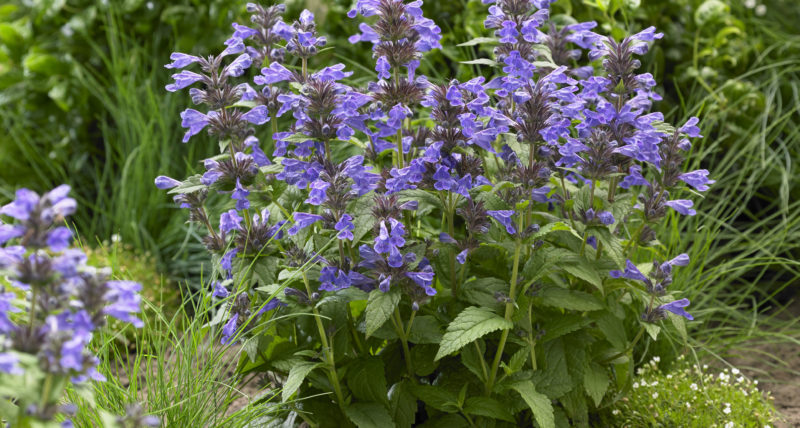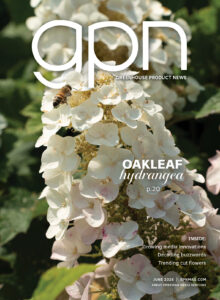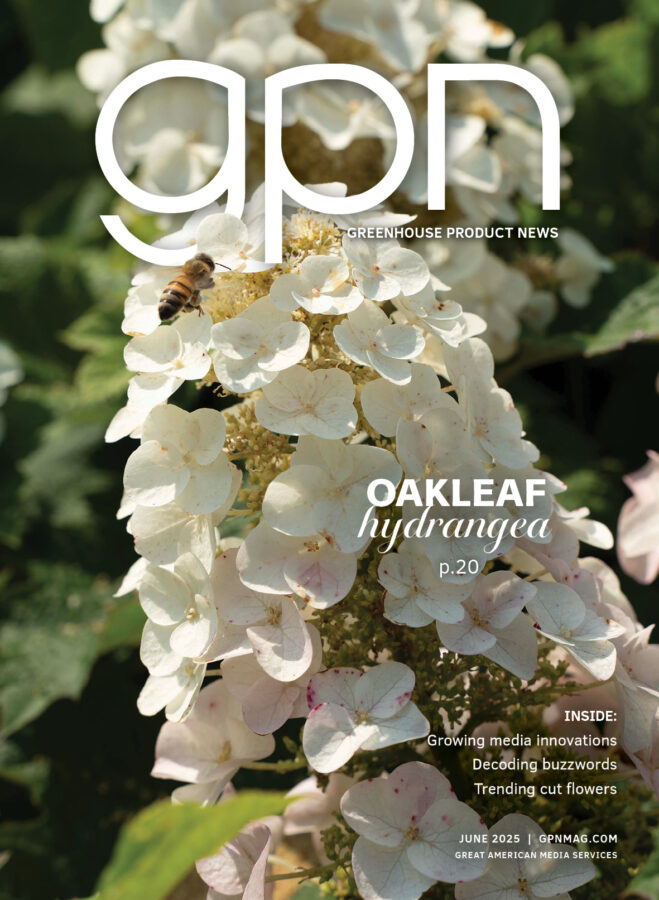
Culture Report: Nepeta ‘Neptune’
Color, performance and production align perfectly in nepeta ‘Neptune’ (‘Bokratune’ PP29556). This amazing cultivar is such a different perennial catmint that it captures attention like no other. An international award winner, it has spikes of cheerful violet blue flowers that bloom from summer through fall and won’t flop like other catmints can. With a little deadheading, it will even rebloom for an extended show.
The flowers stay very upright over bushy, compact mounds of blue-green foliage. You’ll see big blooms and big foliage, but on a diminutive dwarf plant. ‘Neptune’ stays under a foot tall, with a neat clumping form that stays where you put it.
VARIETY SPECIFICS
Since ‘Neptune’ is bred from a different species (N. kubanica) than industry standards like ‘Walker’s Low’, its foliage has a coarser texture than others — not as blue and fuzzy. With heavy serration that gives it an almost scalloped appearance, ‘Neptune’ has more the look of a green herb, like you might find in a mountain field. Leaves waft a light fragrance that accompanies many catmints.
‘Neptune’ has some great qualities that set it apart from the rest, the first being that it’s relatively easy to grow. Just after transplant, a single light pinch may help with branching, but other than that, it won’t need special treatment. We recommend finishing in a 1-gallon container. Plants will finish from a 72 liner for spring sale in approximately six to eight weeks.
GROWING RECOMMENDATIONS
Like all nepetas, this one loves its drainage, so be sure to choose a really well-draining soil. Let plants dry between ample waterings — ‘Neptune’ doesn’t like to have its feet wet. Keep the pH in the slightly acidic r ange, about 5.8 to 6.2, with EC approximately 1.8 to 2.2 using the 2:1
extraction method.
‘Neptune’ is a moderate feeder, so use a well-balanced liquid fertilizer at a rate of 150 to 250 ppm weekly or 50 to 100 ppm constant feed. I prefer a 15-5-15 for my water type in early spring crops, but a 20-10-20 or 20-20-20 would be acceptable depending on your local weather, media and water alkalinity conditions. If you are using a slow-release fertilizer, I have had great success in our Emerald Coast Growers Research and Development Facility with an analysis of 10-4-8 plus micros at a rate of 5 to 10 pounds per yard.
As far as light, provide at least 5,000 foot-candles or full sun. Supplemental lighting won’t be necessary if you’re producing outside as natural daylengths increase in your location. In the greenhouse, it’s definitely a long-day bloomer; it wants 14 hours or more photoperiod. I have finished gallons in our R&D facility and trials under 14 hours extended lighting and have them blooming consistently at exactly eight weeks old.
In the greenhouse, ‘Neptune’ prefers daytime growing temperatures in the range of 65 to 85° F. Night temperatures should stay between 55 and 65° F. Southern growers need not fret; our liners and trials are right at home in greenhouses that regularly see triple-digit daytime temps through the hottest summer months. ‘Neptune’ is hardy in Zones 5 to 9.
‘Neptune’ is more tolerant to bacterial issues from heat, and not as attractive to mites as other nepetas. We like to start early with a biological fungus product and keep a population on the plant as a preventive measure. Monitor and scout regularly, watching for pests like whiteflies, spider mites, and aphids, and diseases such as powdery mildew. Follow standard sanitation protocols, and be sure to provide good ventilation. Provide adequate spacing between plants to deter moisture buildup and allow good airflow.
‘Neptune’ shows some increased resistance to drought stress, so it’s a versatile choice, too. Plus, deer and rabbits don’t like ‘Neptune’, so it makes an excellent repellent, even near heavily wooded areas. Birds, bees and butterflies, however, love this plant — along with, of course, cats, who often nap not only near it but on it, so they can take a quick nip whenever they please.
‘Neptune’ tolerates a range of soils from loam to sand, as long as they drain well, and prefers full sun but tolerates light shade, too. It reaches about 8 to 12 inches tall and spreads to about 8 inches. ‘Neptune’ is great for perennial beds, or for border, container or mixed combination use — try it with rudbeckia or festuca. It pops against dark red or silver foliage, as well as red and yellow flowers. This cultivar makes a great alternative to lavender, too, with less sensitivity to overwatering and more tendency to stay where you put it. It also works well in masses or as a stand alone. One of my top 10 favorite new plants of this decade, this amazing little herb is just a really versatile plant overall.
For more information and other new perennials, please visit www.ecgrowers.com.









 Video Library
Video Library 


















